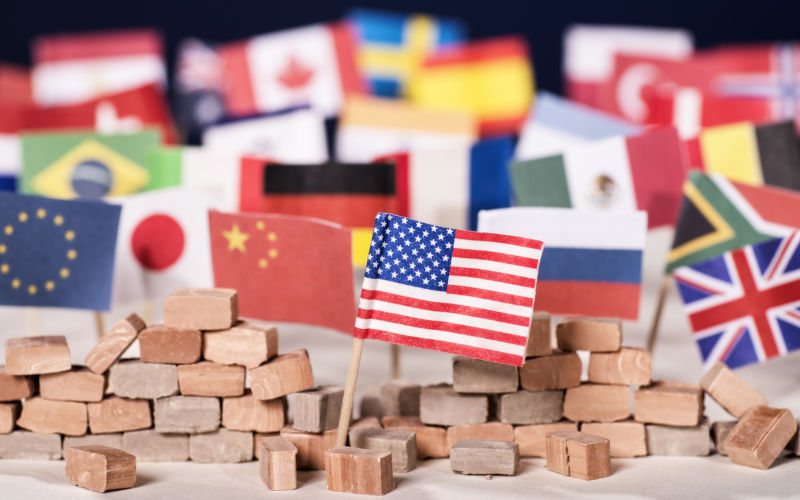Strategic ambiguity: a weapon of mass destruction
September 23, 2023
Strategic ambiguity is the greatest oral weapon of mass destruction that the Western world has ever invented.
The Cambridge Dictionary defines ambiguity as the fact of something having more than one possible meaning and therefore possibly causing confusion The fact that the Wests strategic ambiguity has such a large following among its members is that, when combined with propaganda, possible confusion is created. It is a beautiful idea because it allows the Western powers to make commitments but leave enough wriggle room to manoeuvre themselves out of it later by using a different set of language. On 23/05/2022, US president Joe Biden said that the United States would come to Taiwans defence if China were to invade. This undertaking was quickly walked back by the White House indicating that there was no change in their policy. The formula is yes/no/maybe.
It occurs with such frequency that people around the world have come to accept ambiguity as a geopolitical norm.
If they are unable to do so, the strategy is to apply euphemistic language to sanitise the action. For instance, when the US uses trade sanctions, it is described as containment; but when the Chinese do the same, they are described as trade coercion.
Compared to Western strategies of this nature, the Chinese have no answer. In the defence area, Chinas truly defensive actions are described as expansionist and aggressive while Western nations real expansionism, past and present, is presented as a force of good against evil; or democracy against authoritarianism. In a verbal exchange, the user of English has a distinct advantage because English is used internationally as a language of science and commerce. If Chinese were as widely used internationally, the equation could well be better balanced.
In trade and economics, the American and European ambiguity lie in their accusation of unfair Chinese trading practices based on accusations of government subsidies. The European Union has just started a probe into Chinese Electric Vehicles (EVs), the reason being that they are benefitting from state subsidies at the expense of European EV makers. What they fail to mention is that the US has been subsidising their agricultural production, especially wheat, for decades. The US passed into law the Chips and Science Act (2022) which the White House says will Bolster U.S. leadership in semiconductors. The CHIPS and Science Act provides $52.7 billion for American semiconductor research, development, manufacturing, and workforce development. This includes $39 billion in manufacturing incentives, including $2 billion for the legacy chips used in automobiles and defence systems, $13.2 billion in R&D and workforce development, and$500millionto provide for international information communications technology security and semiconductor supply chain activities. It also provides a 25 percent investment tax credit for capital expenses for manufacturing of semiconductors and related equipment. These incentives will. FACT SHEET: CHIPS and Science Act Will Lower Costs, Create Jobs, Strengthen Supply Chains, and CounterChina. The US describes its own subsidies as incentives.
What looms largest in the present conflict between the Western nations and China is the fact that the Chinese government is ubiquitously described as Marxist Leninist. Although Western analysts are inclined to define terms to the finest of details, a reflection of scholarly ability, none have pointed out the difficulty of, and contradiction in, describing a communist country embracing of capitalism. The very basis for communisms existence as a political force is to combat its idea of the exploitation of excess labour; its disapproval of individual ownership of property; and accumulation of wealth. Drawing attention to this contradiction is tantamount to admitting the fact that China is indeed more like us now; and their attempt to demonise a successful competitor would become less potent. The association with communism and the ambiguity must be maintained. Like their ostracism of Russia, the enmity must be maintained to justify military spending for hegemony; feed the military industrial complex and the wealth of the elites; and have someone to blame when things go wrong.
The Taiwan geopolitical situation is the most glaring, if not the most successful case, of strategic ambiguities. All the Western nations recognise Taiwan as part of China under UN General Assembly 2758. This does not prevent them from flexing their military muscles to prevent Taiwans reunification with the mainland. Strategic ambiguity allows the US to send weapons to Taiwan either as a gift or sale at a profit; sail through the Taiwan Straits without recognising that it is part of the whole; and threaten to help Taiwan in a war against China. Meanwhile they maintain, or increase, their trade with China in order to access cheap consumer goods produced with cheap labour.
The next in order of excellence in strategic ambiguity is the rules based international order (RBIO) that is not properly stated in written language. It allows the Western nations to maintain their supremacy and keep the status quo without any accountability. The RBIO allows the US to falsely accuse Iraq of the possession of weapons of mass destruction in order to invade with impunity, concoct the Gulf of Tonkin Incident to start the Vietnam War or fight the proxy war in Ukraine.
Given that ambiguity is so strongly associated with creating confusion, the intriguing question arises: why is it so ubiquitously used by Western nations in geopolitics?
